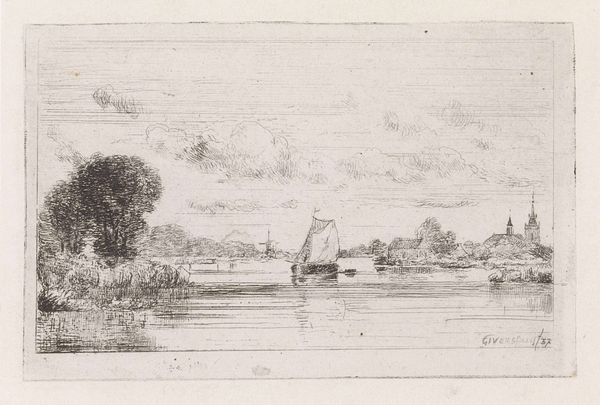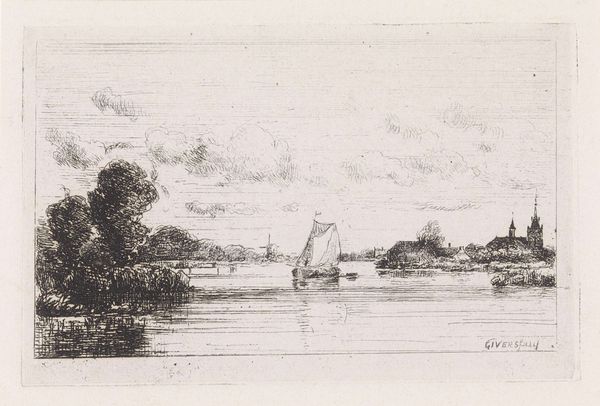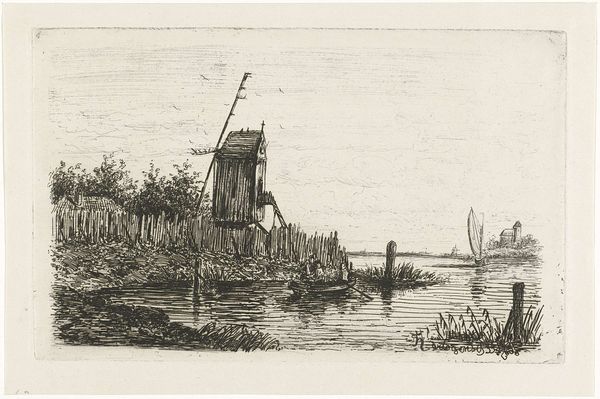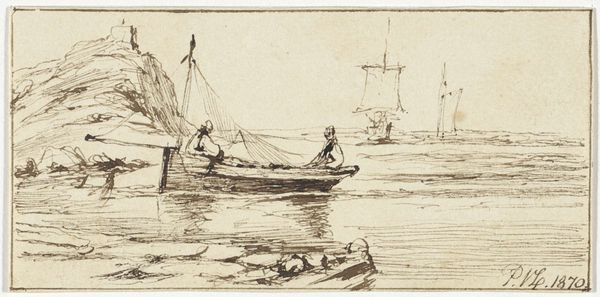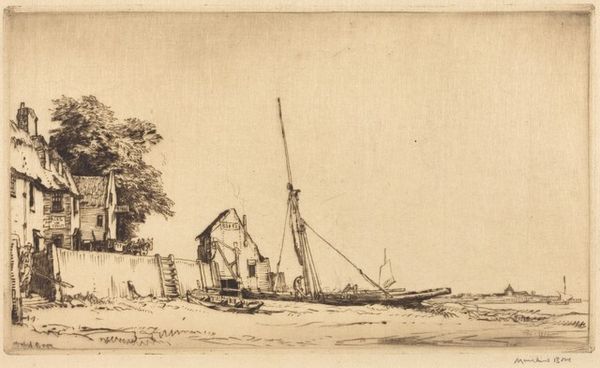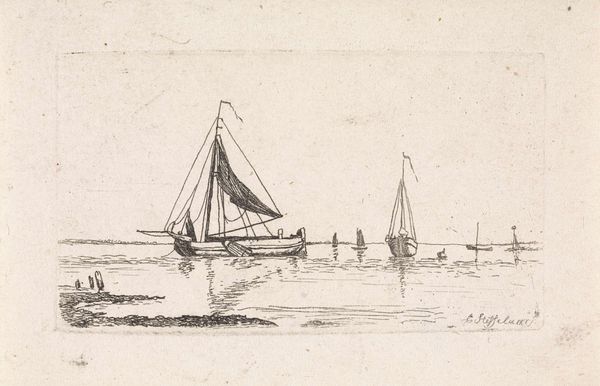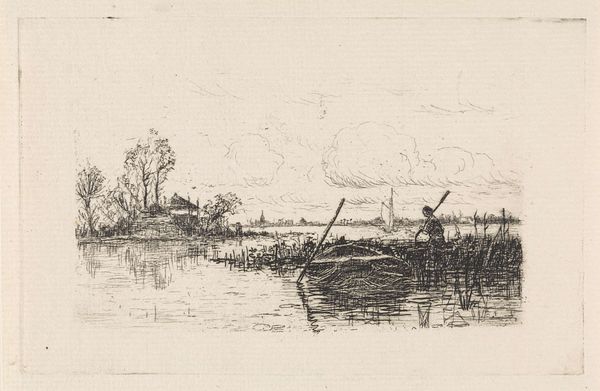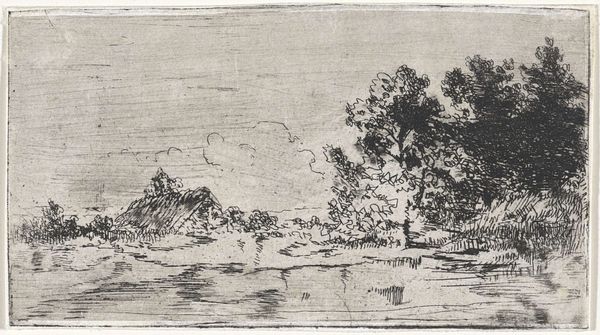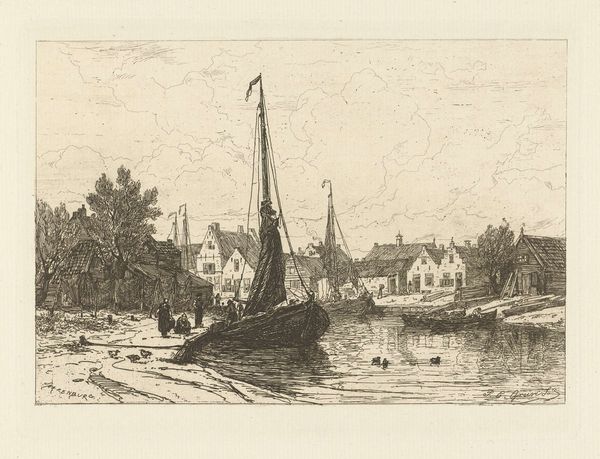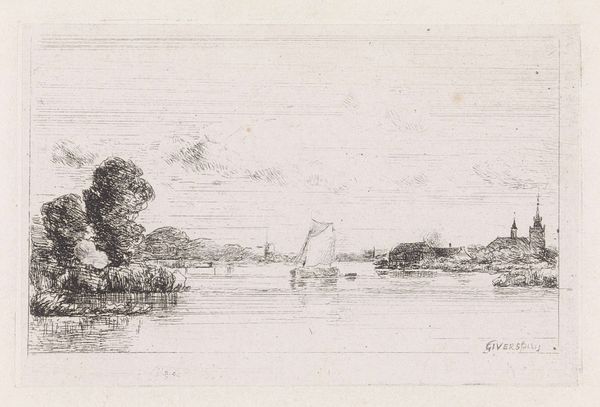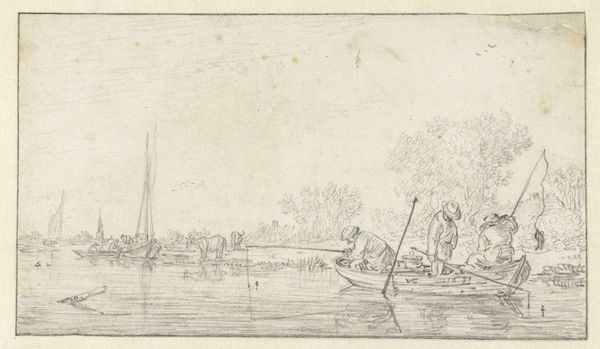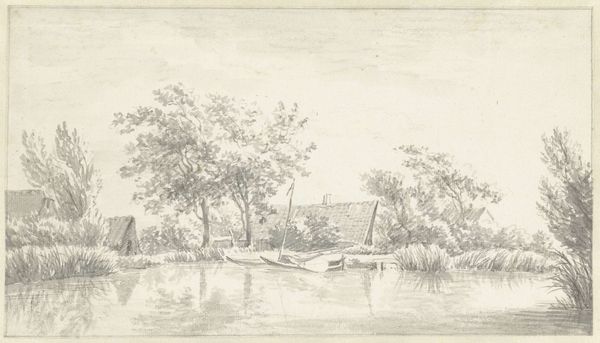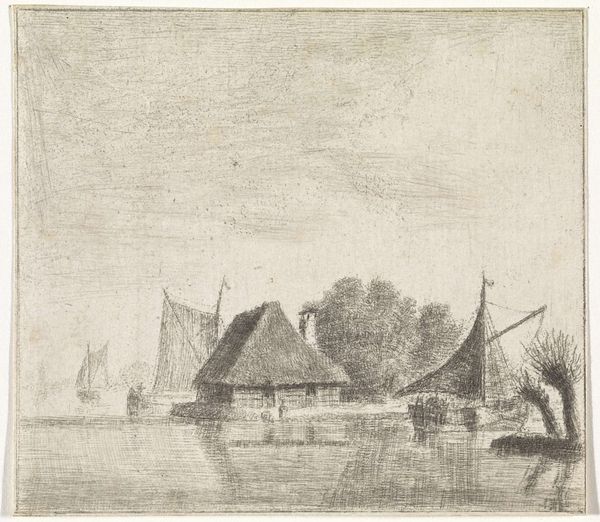
drawing, ink, pen
#
drawing
#
quirky sketch
#
sketch book
#
incomplete sketchy
#
landscape
#
personal sketchbook
#
ink
#
idea generation sketch
#
sketchwork
#
romanticism
#
pen-ink sketch
#
sketchbook drawing
#
pen
#
sketchbook art
#
initial sketch
Dimensions: height 39 mm, width 70 mm
Copyright: Rijks Museum: Open Domain
Editor: So, this is "Twee zeilbootjes," or "Two Sailboats," a pen and ink drawing from 1845 by Cornelis Steffelaar. It feels… intimate, like a private moment captured in a sketchbook. What strikes you when you look at this work? Curator: I'm drawn to the suggestion of leisure here, but also the implied labor. Steffelaar created this piece during a period of immense social upheaval, a time when the Netherlands was undergoing significant economic and political change. Do you think that the seemingly idyllic scene serves as a commentary on the romanticized views of rural life? Editor: That's interesting. I hadn't thought about the contrast between the simple scene and the historical context. It could be read as escapism, maybe? Or a longing for something simpler? Curator: Exactly. Consider the power dynamics embedded within these images of boats, referencing trade routes and colonialism. The sailboats are emblems of exploration but simultaneously instruments of exploitation. It's crucial to analyze how art normalizes or challenges these relationships. What about the absence of figures gives you pause, if anything? Editor: I see what you mean! It initially seemed like a peaceful scene, but when you look at it that way, it's unsettling. It's almost too quiet, considering the time period and subject matter. I really appreciate your interpretation. I'll never look at simple landscapes quite the same way again. Curator: Precisely! Engaging with art means diving deeper into the interwoven layers of history, identity, and power that shape our perceptions. Recognizing these undertones is vital to dismantling harmful tropes and pushing forward an intersectional perspective within art history.
Comments
No comments
Be the first to comment and join the conversation on the ultimate creative platform.
